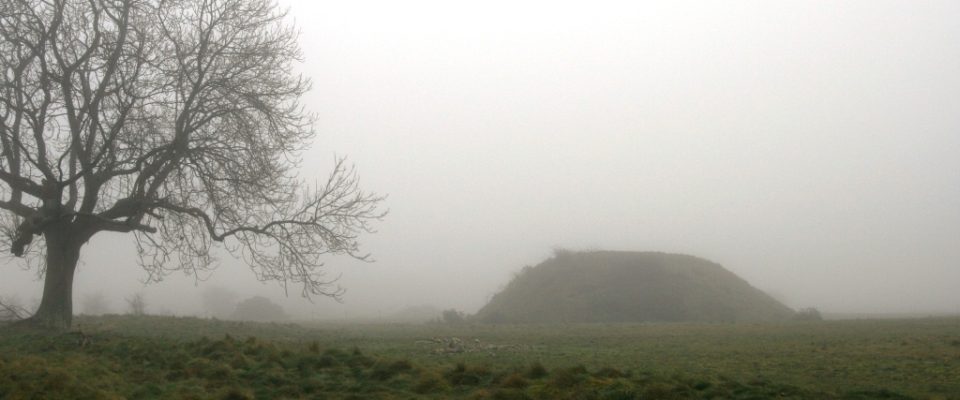Netflix’s historical drama, “The Dig,” immerses viewers in the extraordinary unveiling of the historical site Sutton Hoo. Sutton Hoo was named after the location of a ship burial dating back to the early 7th century AD. The site was discovered on the cusp of the Second World War. Situated in Suffolk, this burial site beheld a large ship hidden beneath a three-meter-high mound. The mound contained a mesmerizing collection of artifacts spanning the known world. This astounding find revolutionized our understanding of early medieval England.
The Extraordinary Sutton Hoo Burial Site
The Sutton Hoo burial site, located in Suffolk, holds a remarkable historical significance. Its origins date back to the early 7th century AD. This site gained worldwide attention during the brink of the Second World War when an astonishing discovery was made. Concealed beneath a towering three-meter-high mound lay a massive 27-meter-long ship. The ship held a captivating collection of artifacts spanning across regions as diverse as Britain, South Asia, Europe, the Middle East, and the eastern Mediterranean. The impact of this find was profound. It reshaped our understanding of early medieval England and illuminating a chapter of history that had long remained obscured.
The Film’s Portrayal of the Discovery and Characters
“The Dig” skillfully brings to life the unveiling of Sutton Hoo and the individuals who played pivotal roles in this remarkable excavation. The narrative centers around key figures such as landowner Edith Pretty, portrayed by Carey Mulligan, Suffolk archaeologist Basil Brown, played by Ralph Fiennes, Cambridge academic Charles W. Phillips, portrayed by Ken Stott, and Peggy Piggott, depicted by Lily James, who made the groundbreaking discovery of the first gold artifact. Set against the backdrop of the impending war, the film captures the tension and drama surrounding the excavation. This draws viewers into the world of these characters and their quest to unravel the mysteries of the past.

Captivating Moments and Lasting Impact
Among the film’s captivating moments is the recreation of Peggy Piggott’s awe-inspiring find. She unearthed the garnet-encrusted scabbard mount, a symbol of the treasures that lay buried beneath the Suffolk landscape. This pivotal scene mirrors the actual events of July 21, 1939, marking the beginning of a series of astonishing revelations. The film’s attention to detail lends an air of credibility to the characters and their interactions.
“The Dig” also pays homage to the awe-inspiring Sutton Hoo ship, impeccably recreated on the film’s set. Production designers delved into the archives of the British Museum, painstakingly examining photographs to ensure an accurate representation. The result is a full-size replica that serves as a poignant reminder of the original vessel. This set forges a visceral connection between the audience and this pivotal moment in history.

As the excavation progresses, the film delves into the dynamic relationships between the characters. It takes care to portray the collaboration and evolution of understanding between Basil Brown and Charles W. Phillips. The film artfully balances historical accuracy with cinematic storytelling, offering a glimpse into the complexities of human interactions and the shared pursuit of knowledge.
In its closing scenes, “The Dig” captures a significant moment as Basil Brown fills the Sutton Hoo ship with bracken, a solemn reflection of the nation’s entry into the tumultuous Second World War. Basil’s diary entries, dating back to August 31, lend an authentic touch to the historical turning point. By blending history with the magic of cinema, the film presents a compelling narrative that invites audiences to partake in the preservation and appreciation of our collective past.
Sutton Hoo Artifacts on Display
Sutton Hoo’s treasures, now prominently displayed in The Sir Paul and Lady Ruddock Gallery of Sutton Hoo and Europe AD 300–1100, offer a virtual window into the world of these captivating artifacts. Furthermore, the enchanting grounds and burial site at Sutton Hoo, managed by the National Trust, provide an immersive experience for those seeking to embark on a journey of discovery and connect with the wonders of antiquity.
We look forward to bringing you the opportunity to experience the Norse way of life through Asgard Alaska. You can help us achieve that goal through a tax-deductible donation. We appreciate your support.
Source: https://www.britishmuseum.org/blog/inside-dig-how-star-studded-film-squares-reality-sutton-hoo



